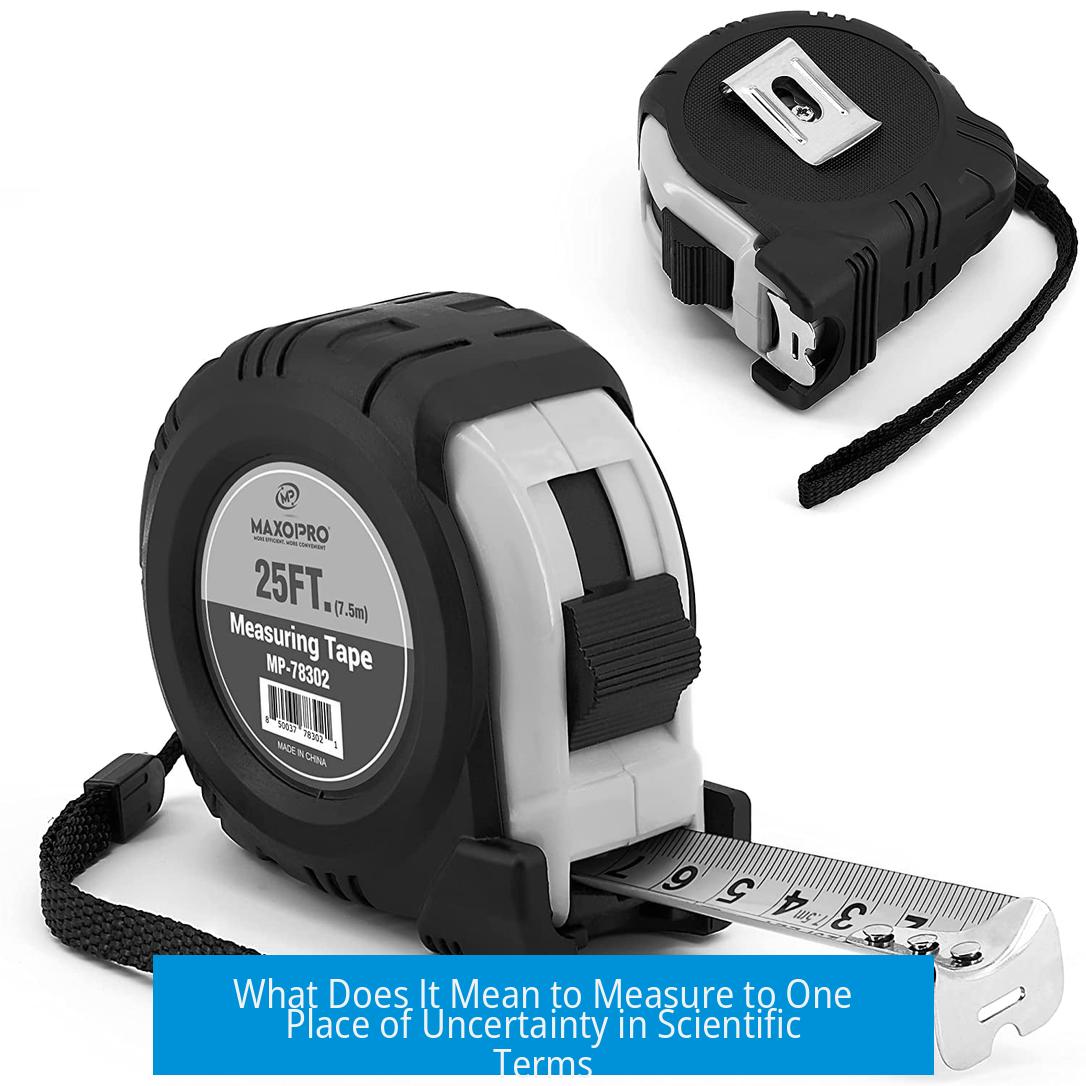What Does It Mean to Measure to One Place of Uncertainty?

Measuring to one place of uncertainty means recording a measurement with one digit beyond the smallest marked unit on the instrument. This extra digit expresses the uncertainty or estimate in the measurement.
Understanding Measurement Precision
Every measuring device has smallest scale divisions. The official reading comes from these marked increments. However, precise measurement requires estimating one more digit beyond these markings. This last digit represents uncertainty and indicates how exact the measurement is.
How to Report Measurements
- If an instrument has smallest units of 0.1 mL, record the measurement to the hundredths place (e.g., 0.12 mL). The second decimal is an estimate, showing uncertainty.
- For burets graduated in 0.1 mL increments, readings should be noted to two decimal places, such as 40.00 mL. The last digit is guessed and signals uncertainty.
- With increments of 1 mL, record to the tenths place (e.g., 9.0 mL) to express uncertainty in the final digit.
Estimating the Uncertainty
Uncertainty usually corresponds to about half of the smallest unit marked. For instance:
| Smallest Unit | Measurement Example | Uncertainty Estimate |
|---|---|---|
| 1 mL | 9.0 mL | ±0.5 mL |
| 0.1 mL | 40.00 mL | ±0.05 mL |
Practical Implications
This method ensures consistent and clear communication of measurement precision. The one extra digit conveys how carefully the measurement was made and reflects the instrument’s limitations.
- The last digit is always an estimate reflecting uncertainty.
- Measurements recorded without this extra digit underreport uncertainty.
- This approach applies to all instruments, from rulers to volumetric glassware.
Summary of Key Points
- Record one digit beyond the smallest scale to show uncertainty.
- The additional digit is an estimate, not exact measurement.
- Uncertainty is typically about half the smallest marked unit.
- Reporting this digit improves the accuracy and reliability of data.
What does it mean to measure to one place of uncertainty?
It means recording one digit beyond the smallest marked unit on the measuring tool. This extra digit shows the estimated uncertainty in the measurement.
How do you determine the uncertain digit when measuring with a graduated cylinder?
If the smallest unit is 0.1 mL, you record the value to the hundredths place. The last digit is estimated and reflects uncertainty.
Why is the uncertain digit always one decimal place beyond the smallest unit?
This extra digit accounts for the estimate between the smallest lines on the instrument. It captures the uncertainty in reading the scale.
How is uncertainty related to the smallest division on a measuring tool?
Uncertainty is about half the smallest scale division. For example, if increments are 1 mL, uncertainty is roughly ±0.5 mL.
Can you give an example of reporting a measurement with one place of uncertainty?
Yes. For a buret graduated in 0.1 mL, you might record a volume as 40.00 mL. The last zero is the uncertain digit.





Leave a Comment